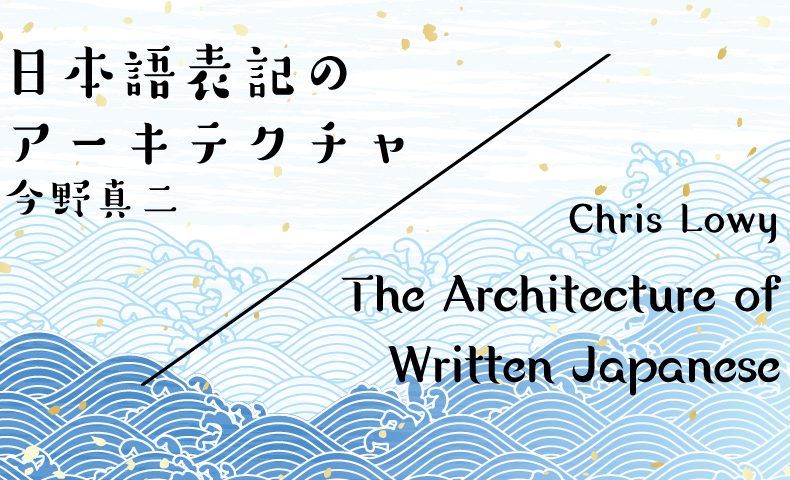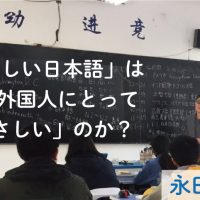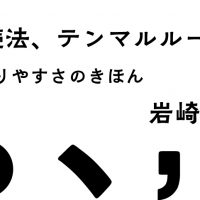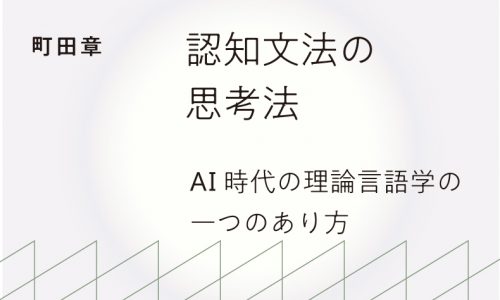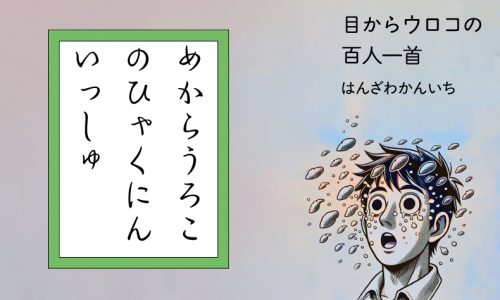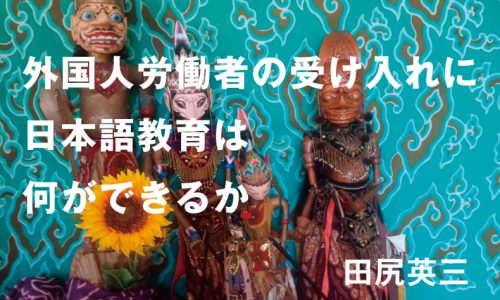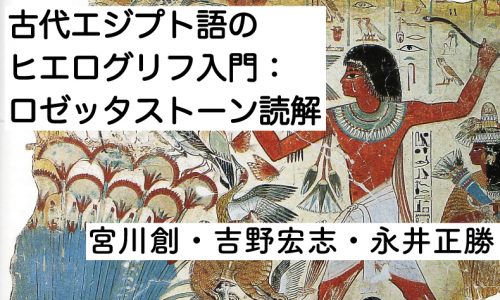今野真二
第2回では、第3回から第10回までの各回において採りあげる、日本語表記にかかわる8つの要素について概略を述べておくことにしたい。「基本的な文字種」が第3回、「符号」が第4回、「書字方向」が第5回、「文字の大きさ」が第6回、「振仮名の可能性」が第7回、「Base Text」が第8回、「書きことばの互換性」が第9回、「漢字体系の拡張性・開放性」が第10回で採りあげるものである。
[基本的な文字種:漢字・片仮名・平仮名]
「カタカナ」という語を片仮名で「カタカナ」、「ヒラガナ」という語を平仮名で「ひらがな」と文字化することがある(註1)。「漢字・カタカナ・ひらがな」という文字化のしかたに特に違和感をもつ人は少ないことが予想されるが、「カタカナ」という語だから片仮名で文字化しなければいけないということはなく、ごく一般的に選択される「漢字平仮名交じり」の表記体であれば、漢字を使って「片仮名」と文字化するか、平仮名を使って「かたかな」と文字化することが自然であろう。それにもかかわらず、「カタカナ」という語だから「カタカナ」と文字化したくなる、あるいはそうした文字化に違和感をもたないのは、すでにそこに「表記体を超えた浸食」(のようなもの)がうまれているからではないか。このことは第10回の後、第11回の話題にかかわりをもつ。
さて、仮名の発生を9世紀後半頃とみるとして、その仮名の発生までは、日本語を文字化するために使うことができる文字は漢字のみであった。8世紀には成っていたと考えられている『万葉集』、『古事記』『日本書紀』いずれも漢字によって文字化されている。比喩的な表現をすれば、日本語が初めて出会った文字が漢字であった。そのことは、日本語の表記の歴史はいうまでもなく、日本語の歴史そのものにも影響を与えたと思われる。「文字化に漢字を使う」ことは、日本語の歴史の中で一貫して変わらないことといってよい。
中国語を文字化する場合の漢字は「表語文字」、日本語を文字化する場合の漢字は「表意文字」とみたい。「表語」は発音と語義とを備えた特定の1語、すなわち1つの語をあらわすということであり、「表意」は文字化されている語がどのような語義をもっているかを示すということである。そしてその「文字化されている語」は発音と語義とを備えた特定の1つの語ではないことがある。例えば漢字列「容貌」は漢語「ヨウボウ」をあらわすが、江戸時代以降であれば、和語「カオツキ」をあらわすこともあり、そうした具体例も少なからず確認できる。漢語「ヨウボウ」と和語「カオツキ」との語義に重なり合いがあることによって、和語「カオツキ」を漢字列「容貌」によって文字化することができるとみるのであるが、そうみた場合、漢字列「容貌」が和語の語義に具体的にどのようにかかわっているかを説明することは実は難しいのではないだろうか。
そして、仮名は「表音文字」ということになる。
[符号]
/ka/をあらわす仮名が「か」、/ga/をあらわす仮名が「が」であるとみた場合、「か」と「が」とは別の仮名ということになる。明治33(1900)年8月21日に、文部省令第14号としてだされた「小学校令施行規則」の第1章「教科及編制」の第1節「教則」の第16條には「小学校ニ於テ教授ニ用フル仮名及其ノ字体ハ第一号表ニ、字音仮名遣ハ第二号表ニ依リ又漢字ハ成ルヘク其ノ数ヲ節減シテ応用広キモノヲ選フヘシ」とある。その第1号表には平仮名も片仮名も「がぎぐげご」「ざじずぜぞ」「だぢづでど」「ばびぶべぼ」の濁音4行と「ぱぴぷぺぽ」の半濁音1行が掲げられている。すなわち、この第1号表においては、「か」と「が」とは別の仮名として扱われていることになる。
その一方で、「濁点」「半濁点」という用語もある。日本語学会編『日本語学大辞典』(2018年、東京堂出版)の見出し「濁点」においては、「日本語の平仮名と片仮名の中で、カ・サ・タ・ハ行の仮名の右肩に打たれる「゛」のこと。濁音符ともいう。また、パピプペポのようにハ行の仮名の右肩に打たれる「゚」を半濁点または半濁音符という」(600p右)という説明がなされている。
「濁点」「半濁点」という「符号」があって、それを右肩に打つことによって濁音、半濁音をあらわすという「みかた」は、清音をあらわす仮名と濁音をあらわす仮名とが別々に存在しているのではなく、清音をあらわす仮名に「符号」を附けることによって濁音をあらわすという「みかた」といってよい。
日本語の歴史を観察すれば、現代日本語のように、濁音をあらわしている音節を100パーセント濁音音節として示すようになったのは、おそらくは、早くても明治末期頃から大正期にかけての頃と推測する。つまり、濁音音節を明示するようになってから、120年ほどしか経過していない。それまでは、濁音音節は明示していなかった。そのことは、日本語における濁音の位置づけとかかわる。日本語においては、清音と濁音との違いによって、語を弁別することが多くない。また古代日本語においては、濁音は語頭に位置していなかったと考えられている。
[書字方向]
屋名池誠(2003)は日本語における「横書き」を論じた好著であるが、そこでは、日本語が「横書きを用いるようになったのは、日本語の長い文字使用の歴史からいえば「つい最近」、わずかこの百数十年のことにすぎないのである」(ⅰp)と述べられている。そして、左から右方向へと進む「左横書き」が公刊された最初の例として『浅解英和辞林』(明治4:1871年10月刊)をあげている。
今野(2019)でもふれているが、文久2(1862)年に江戸幕府の洋書調所から刊行された、日本最初の官版英和辞書『英和対訳袖珍辞書』は、見出しとなる英語の印刷には洋書調所がもっていた活字を使い、献上された英国製のスタンホープ印刷機を使って活版印刷し、日本語は木版に彫って印刷してある。
英語はいうまでもなく、左横書きされているが、語釈の日本語は行を左に90度倒した「横転縦書き」で印刷されている。したがって、『英和対訳袖珍辞書』の版面において、左「横書き」と横転「縦書き」とが「同居」していることになる。
明治6(1873)年に出版された『附音挿図英和字彙』初版の日本語語釈は「横転縦書き」で印刷されている。しかし、明治15(1882)年に出版された第2版(再版)は、日本語語釈を「左横書き」で印刷している。第2版の「緖言」には「旧版ノ訳語ヲ正シ訳字ノ繁冗ヲ省キ且ツ横植ノ訳字ヲ正植ニ変シ紙面ノ空白ヲ塡メ大ニ全部ノ体裁ヲ改メ以テ閲覧ニ便ニス」とあり、初版の「横植」を「正植」にしたことがはっきりと謳われている。
「右縦書き」を書字方向としてきた日本語と、「左横書き」を書字方向としてきた英語が出会い、英和辞書というテキストにおいて、2つの言語が出会い、「同居」することを通して、日本語における「左横書き」が定着していくことには注目したい。
[文字の大きさ]
藤原定家が書写したと推測されてきた『土左日記』の末尾に、紀貫之自筆本『土左日記』の2葉を摸写(スケッチ)したものが附録されている。紀貫之自筆本は明応元(1492)年までは足利義尚後室の居所である小河御所にあったことが知られているが、現在は所在がわからない。この紀貫之自筆本を鎌倉時代に、藤原定家、藤原為家が、室町時代に、松木宗綱、三条西実隆が書写している。三条西実隆が写した本をさらに写したと思われる三条西家本の奥書には、紀貫之自筆本について、実隆が「古代仮名猶科蚪(古代の仮名はなお科蚪の如し)」と記している(註2)。(科蚪=蝌蚪はおたまじゃくしのこと)
摸写は「むまれしもかへら/ぬものをわかやとに/こまつのあるをみる/かかなしさ」(/は改行位置を示す)という和歌から始まる。和歌は4行にわたって記されているが、1行目には8字、2行目には9字、3行目には9字が記されていて、1行の文字数が定まっていない。1行目の行末にはまだ1字あるいは2字ぐらい書くことができそうな空白がある。1行目の「れ」や2行目の「ぬ・わ・や」は大きく書かれているが、1行目の「かへら」は小さい。また1行を縦に見ると、文字の中心線は揃っていない。そうしたことが、実隆にばらばらに泳ぎ回る「おたまじゃくし」を思わせたのではないだろうか。今野(2001)第2章第1節の2「書記における「行」意識」において「行」という意識について述べているが、紀貫之自筆本の摸写は、それが記された時期には「行」の意識が存在していなかったことを思わせる。
「行」の意識が定まり、文字を記す紙の大きさが定まり、1行に書く字数が定まるというプロセスがあり、その一方で活字による印刷ということが行なわることによって、「行」「文字の大きさ」という概念が定着していくと思われる。こうしたことがらについては、言語学の分野においては正面から扱われることが少ない。しかし、「日本語表記のアーキテクチャ」を考えるにあたっては、重要な要素といえるだろう。
[振仮名の可能性]
今野(2020)においては、日本語を漢字によって文字化するということが振仮名に深くかかわるという指摘をした。その考えは現在でも変わらない。「漢字列」に仮名によって振仮名を施すのが振仮名の基本的なあり方(註3)であることからすれば、語を漢字によって文字化するということがなければ振仮名という表記形式もないことになる。
また、日本語を「表音文字」である仮名で文字化するのであれば、振仮名は必要がない。というよりも、文字化に使う文字種が1種類であると「振仮名」のような表記形式は採れない。「漢字による文字化」を軸にして振仮名を説明するのは、いわば日本語の歴史という枠組みで振仮名を説明することでもある。
これに対して(と表現しておくが)、振仮名という表記形式を成り立たせていることがらの側から振仮名をとらえることもできる。例えば、活字印刷において振仮名を施す場合は、「本行」と振仮名用活字を植字する行との2つの行の設定が必要になる。振仮名用の小さな活字(ルビ)を植字し印刷するためには、そうしたことを可能にする技術が必要となる。ために、明治期においては、活字印刷されているテキストの振仮名の「事故」は少なくない。今野(2020)においては、ボール表紙本『禽獣世界 狐の裁判』における「ひっくり返った振仮名」を紹介した。
「本行」と「振仮名行」と2つの行があるということは、相関しながらも独立した2つの行が存在しているということで、そのことが「複線」的な言語表現を可能にする。先に紹介した『附音挿図英和字彙』の再版は、初版にあった振仮名の多くをはずしている。少数残された振仮名は「左横書き」された語釈の日本語の下側に附されている。これは、日本語を「左横書き」で印刷し始めた当初は、横書きした日本語に振仮名を施すことに「心性」としても技術としても慣れていなかったためと推測する。日本と中国とが戦争状態になった昭和16-17年頃に印刷出版されたテキストは紙質もわるく、振仮名の施されていないものが少なくない。こうしたことも振仮名と技術ということとかかわっていると推測する。
[Base text]
今野(2009)第1章第5節において「本文」という概念について述べた。そこでも引用したが、『日本古典籍書誌学辞典』(1999年、岩波書店)は「本文」を「書物や文書類の本体の部分をいう。書物の本文という場合は、緒論・付録・補遺・序・跋・注・目次・索引などに対する呼称であるので、これらを除いた本体をさす」(531p)と説明している。この「みかた」は、テキストに関して「本体」があり、その「本体」に付随しているものがある、すなわちテキストが構造をなすととらえる「みかた」といってよい。
中国の儒教の教典である経書13種の「注疏」を集めた『十三経注疏』というテキストがある。漢魏の間に成った経書についての注である「経注」と、その「経注」のさらなる注解というべき「疏」とを合わせたテキストであるが、こうしたテキストは「注解」「注解の注解」という構造、階層をもったテキストといってよい。
例えば、『古今秘注抄』(京都:曼殊院蔵)は『古今和歌集』についての注釈書であるが、『古今和歌集』の和歌が「漢字平仮名交じり」で文字化され、その左隣に、当該和歌の注釈が「漢字片仮名交じり」で文字化されている。このテキストの『古今和歌集』の和歌の部分を「Base text」とみるならば、「漢字片仮名交じり」で文字化されている部分は「Base text」に対する注釈ということになる。『古今和歌集』は905年に奏上されており、一方『古今秘注抄』の注釈部分は中世に成ったと考えられている。したがって、前者と後者とは、そもそも異なる日本語によって記されたテキストといってよく、それが『古今秘注抄』という1つのテキストとしてまとめられていることになる。『古今秘注抄』が2つのテキストから成っていることは、「漢字平仮名交じり」「漢字片仮名交じり」という2種類の表記体によって示されている。
[書きことばの互換性]
稿者は、音声によって形を与えられている言語を「音声言語」、文字によって形を与えられている言語を「文字言語」と呼んできた。例えば漢字列「挙動」に振仮名「ふるまい」が施されているとる。これは、「フルマイ」という和語を、通常であれば、漢語「キョドウ」に使う漢字列「挙動」によって文字化した例ということになる。それを可能にしているのは、和語「フルマイ」の語義と漢語「キョドウ」の語義との重なり合いであるが、その語義の重なり合いは「書き手」はいうまでもなく、同時代の多くの「読み手」にも感じられるはずで、その点において「挙動(振仮名ふるまい)」という表記形式は複線的な言語表現といってよい。
「挙動(振仮名ふるまい)」も平仮名によって文字化した「ふるまい」も、あるいは「振る舞い」も発音すればすべて「フルマイ」になる。その、すべて「フルマイ」になるという側から考えれば、これは「書きことばの互換性」の例になる。
しかしまた、「挙動(振仮名ふるまい)」「ふるまい」「振る舞い」は視覚的にはすべて異なるのであって、そのことをもって、これらすべてが異なるとみることはできる。そう考えると、「書きことばの互換性」は成り立たない場合があることになる。
今野(2020)においても話題にしたが、岩波文庫『江戸川乱歩作品集Ⅰ』(2017年11月)の巻末の「解説」は、乱歩の「虫」という作品に関して、「本書は底本に従い原則として新字体を採用しているが、右の事情に鑑み作品本文中の表記も含め「蟲」を用いた」(495p)と述べている。乱歩は「肉体を蝕む微生物(蛆ではない。もっと小さな目に見えない肉食ば菌)の恐ろしさを書いて見たいと思った」と述べているが、そのことと編集方針からはずれて、この作品に限って「蟲」を使用するということにどのような論理的な(と表現しておくが)つながりがあるのだろうと思わざるをえない。これは現代日本語を母語とする人の「蟲」字(あるいはひろく康煕字典体の漢字)についての「心性」があらわれたものとみえる。編集方針からはずれて「蟲」字を使用することは不合理と思うが、現代日本語を母語とする人にこうした「心性」があることは興味深いし、また留意しておきたい。文字使用の歴史の中で、さまざまな「心性」が醸成されてきていることについては、合理、非合理を超えてとらえておく必要がある。
[漢字体系の拡張性・開放性]
稿者は中国語を文字化するために使われる漢字は表語文字、日本語を文字化するために使われる漢字は表意文字で、両者の機能は異なると考える。したがって、それぞれが1つの文字セットとして体系をなすとまずは考えたい。
しかしこのことについて、現代日本語母語話者ははっきりと自覚しているだろうか。例えば、大学の授業において、漢字について調べるのであれば、『大漢和辞典』を使うことをすすめることが多いだろう。しかし、『大漢和辞典』によって確認できる「情報」のほとんどが、中国語を文字化するために使われてきた漢字についての「情報」であることがどれくらい認識されているだろうか。それが認識されていないのだとすれば、それは漢字という文字セットがあって、その文字セットを中国語においても日本語においても使っているとみなしていることになる。
このことは日本語の文字化にあたって漢字をどう使うか、ということと深く関わる。新井白石『同文通考』(1760年刊)は、中国語と日本語とにおいて同じ文字である漢字を通用させているというとらえかたをした上で、「同訓異字」と呼ばれる現象について、中国語規範を示しながら述べている。これも1つの文字セットというとらえかたに基づいたテキストといってよい。
アルファベットや仮名といった文字セットは、その文字セットを構成している文字の数がいわば「みえている」。しかし、漢字についてはそれがみえていないといってよい。そのことをどのようにとらえ、どのように評価すべきか、考えるべきことは多い。
註1 今野(2017)は「日本語表記の歴史」を副題として「漢字とカタカナとひらがな」を書名としている。
註2 中国の篆字の古体を「蝌蚪文字」と呼ぶことがある。実隆の「科蚪」がこの「蝌蚪文字」を意味している可能性もあるが、いずれにしても「おたまじゃくし」に見えたということはいえると考える。
註3 『古今和歌集』や『源氏物語』の注釈書においては、仮名によって文字化した和歌や物語の「本文」に漢字を添えることがあり、これを「振り漢字」と呼ぶことがある。こうした表記形式も仮名を添えていないけれども、広義の「振仮名」とみることはできる。いずれにしても2種類の文字を使っていることになる。
参考文献
今野真二 2001 『仮名表記論攷』(清文堂)
今野真二 2009 『文献日本語学』(港の人)
今野真二 2009 『振仮名の歴史』(集英社新書、その後に、2020年に補章を加筆して岩波現代文庫から出版された)
今野真二 2017 『漢字とカタカナとひらがな』(平凡社新書)
今野真二 2019 『日本語が英語と出会うとき』(研究社)
今野真二 2020 『乱歩の日本語』(春陽堂書店)
屋名池誠 2003 『横書き登場-日本語表記の近代-』(岩波新書)
Chris Lowy
In the previous installment I defined inscription as the settled text that appears before a reader. This time I discuss how the architectural features of a writing system establish the parameters by which a writer composes a text. The act of inscription, importantly, occurs within the limits of a script’s architecture regardless of the means by which one chooses to write (e.g., by hand, on a computer, or by phone).[1] I then briefly introduce the eight architectural features of the Japanese script that writers writing in Japanese are expected to adhere to.
The Architecture of Script
Hiking is a common pastime in the Pacific Northwest. A person might wake up early on the weekends, savor a cup of fresh brewed coffee, hop into their car, and head to the mountains just outside of Seattle. They have entered nature: suddenly, ensconced in the smell of blossoming flowers, they are surrounded by ancient forests, snowcapped mountains, and pristine lakes. Now, imagine that same person is suddenly looking at this nature from behind a large, wrap-around window. The window is fully transparent; save for the smell of flora and a cool breeze, the person might as well be outside. The metaphorical distance between inside and outside is minimal. But what if our wrap-around window is suddenly replaced by several large square windows? Or what if those windows are not square but diamond-shaped? Rectangles? Or what happens when the fully transparent glass becomes slightly tinted, frosted, or even stained? While nature and the person enjoying it remain unchanged, the structure of their point of interaction – that is, the window – shapes how the person experiences this nature. The role of the window and its effect on the person’s experience of nature is what, in a very different context, media theorist Alexander Galloway calls the interface effect: “autonomous zones of activity” that “achieve more the less they do” (Galloway 2012). In other words, though we might not think much about windows and their relationship to nature, they play a critical role in shaping how we experience a world one step removed.
The same principle can be applied to the relationship between humans, languages, and writing systems. Language as a phenomenon is like nature in this analogy: it exists with or without a writing system (i.e., window) to record it. Indeed, languages flourished long before they were written down, and they would continue to exist were we to suddenly lose the capacity to write them. And just as there are any variety of windows people look through to view nature, there are numerous scripts that people use to record language. A script, then, is like a window: it is an interface we use to access and record – to (re)present – some object larger than itself. As a general principle, then, they act in service to some larger good. Rarely are windows or scripts considered in isolation; windows draw our attention to what lies on either side of them while scripts draw our attention to the language they are representing. Nevertheless, and as Galloway notes, windows, as are scripts, are autonomous zones of activity. Just as the physical constitution of a window (e.g., its coloration, framing, thickness, shape) is significant in understanding how a person experiences what sits beyond it, so too is a consideration of the makeup of a script important in understanding how a reader (or writer) experiences language filtered through it. Just like windows, scripts, too, are diverse conglomerations of features and conventions that differentiate them from other scripts. These conglomerations of features and conventions is what I call a script’s architecture. Understanding the architecture of a script is the first step in understanding how it functions as an interface and the effects it has on both the reader and writer.
The architectural features of a particular script – that is, the various elements of a writing system that come together to form a cohesive unit – are best understood both diachronically (i.e., because of a particular historical process) and synchronically (i.e., as a phenomenon existing in a particular moment). When considering the architectural features of a script such as the Latin alphabet, for example, a diachronic approach would consider its relationship to the Etruscan alphabet and various linguistic reasons why the script developed the way it did. A synchronic approach, on the other hand, might consider capitalization rules in the Latin alphabet when writing modern standard English. The former certainly shapes the latter, but one need not have knowledge of the former to gain proficiency in using the Latin alphabet. As I have written elsewhere, “the historical conditions that gave rise to a script is one history while the application of that resultant script is another” (Lowy 2021). If it is our goal to understand why a script functions in a particular way, we should understand how it came to be. This question of how a script came to be – in other words, thinking about a script diachronically – is largely (though by no means exclusively) the interest of Konno’s serialization. My analyses throughout this series, on the other hand, is largely (though by no means exclusively) synchronic in nature. I am interested in how the architectural features of a script establish limits of acceptability, thereby shaping the boundary between intelligibility and unintelligibility. It should not come as a surprise that contemporary authors often probe the limits of intelligibility for their creative and aesthetic purposes. While I am interested in describing how an author uses script to achieve their literary intentions, Konno’s work tells us why those tools are available to them.
Architecture is also an apt metaphor for thinking about script because, just as there is great variety in the type of buildings that exist, so too is their great variety in the writing systems we use to record and represent language. Something important to understand about the relationship between a script and the language it is used to write is that any perceived essentialist relationship between the two is arbitrary. While it is true that, for example, the Chinese script (i.e., 漢字) developed to write the Chinese language and, as a result, is able to record it effectively, the Chinese script came to be used to write Japanese, a typographically different and wholly unrelated language. Sometimes scripts need not undergo a process of adaptation to write other languages. The Latin alphabet can, after all, be used to write Japanese! Other examples abound: the Hebrew script – an abjad associated with Hebrew, a Semitic language – is also used to write Ladino (a Romance language related to Spanish), Yiddish (a Germanic language related to German), and Judeo-Arabic (a language closely related to Arabic). All of this is to say that there is no essential relationship between a script and the language it is recording, and any claims otherwise are misguided.
The Architecture of Written Japanese: Eight Features
I will now preview the next several topics of discussion by briefly introducing what I consider to be the eight major elements of the Japanese writing system that comprise the architecture of written Japanese. Both Konno and I will elaborate on each one in further installments.
(i) Three Character Sets
The Japanese language is generally written in a combination of three character sets: Chinese characters, called kanji (漢字), hiragana, and katakana. Kanji entered Japan via the Korean Peninsula around the fifth century. In Japanese texts, kanji – which usually represent nouns and verbs – are generally read in one of two ways: either in a manner based on its Chinese pronunciation (on’yomi) or as a semantic equivalent to an already existing Japanese term (kun’yomi). Hiragana and katakana, on the other hand, are derivatives of kanji but are today regarded as discrete character sets. Both sets contain 47 base characters that can be, among other things, augmented with voiced, semi-voiced, and germinate consonant markers, as well as an elongated dash used to indicate long vowels. The entire spectrum of the modern standard Japanese language can be represented in both hiragana and katakana, and as such all utterances in Japanese can be represented in either or both. Today, both hiragana and katakana are standardized, and the Ministry of Education produces a list of kanji whose knowledge is deemed sufficient for daily life in Japan. The conventional uses of each three sets will be discussed in detail later.
(ii) Typographic Markers, (iii) Bidirectionality, (iv) Predictable Space Distribution
The set of typographic markers contained within the Japanese writing system is incredibly diverse. In fact, different elements contained within the set of typographic markers used today represent various stages in the evolution of the Japanese script: Chinese manuscript and late print culture, Western print culture, and interactions with Buddhist texts, including those written in Sanskrit. Diacritics allow one to indicate voiced (dakuten) and semi-voiced (han-dakuten) sounds, a full set of punctuation marks, and a variety of marks used to indicate the repetition of a preceding character (the exact mark will depend on whether said character is a kanji or hiragana/katakana). Typographic conventions remained largely inconsistent through the Meiji Period (1868-1912); it was common for a single author (within a single text) to haphazardly apply the aforementioned voiced and semi-voiced marks. Though ubiquitous today, with a little training the presence or absence of these marks has little effect on comprehensibility.[2]
The Japanese script today is bidirectional, with texts tending to be internally consistent.[3] Until extended contact with texts written in Western languages, Japanese was written vertically from left to right. Today, literature can be found written in both styles, and manga dialogue often appears vertically. Readers of Japanese read texts written in either format without issue. The size of each character – kanji, hiragana, or katakana – appear within an imaginary space of the same size resulting in predictable space distribution. This means that the total area of simple one-stroke kanji (一) is no smaller or bigger than the most visually-complex ones (鬱). This standardization of character size is at odds with the aesthetics of manuscripts written in Japanese. One popular style of writing, for example, written largely in hiragana and in a heavily cursivized style, often connected characters in highly stylized ways. The result – indeed, the goal – was an aesthetically pleasing text but one inconsistent in character size.
(v) Interlinear Glosses, (vi) Base Text, (vii) Interchangeability
Interlinear glosses generally appear just above or around individual characters or character strings in left-to-right horizontally oriented texts and to the right of them in right-to-left vertically oriented ones. The most important interlinear gloss today is furigana, which I will discuss in detail later, but there were historically others such as sequential indicators (kaeriten), kana suffix markers (okurigana)[4], and particle indicators (okoto-ten). These markers have their origins in practices developed to read, annotate, and convert texts written in literary Sinitic into – and to varying degrees – vernacular Japanese. While particle indicators would disappear and kana suffix markers would become integrated into the base text, furigana are still widely used today. Their primary purpose is to clarify the reading of a particular character or character string; their usage, however, is by no means limited to this, and writers make great use of them for literary purposes. The base text is the text that remains once all interlinear glosses have been removed. The base text, too, can be a space of creative expression: because most nouns and verbs can be written in kanji, and because hiragana and katakana can represent all utterances in Japanese, there is opportunity for authors to represent a single expression in a variety of ways. This can be called the principle of interchangeability. This does not mean that each mode of representation is equal. In fact, convention often dictates standard orthographic representation. Indeed, precisely because conventions abound, meaning through representation is created by playing with these orthographic standards. For example, writing a term in katakana when kanji (or hiragana) is expected can result in a variety of effects, a sampling of which I will discuss later.
(viii) An Expansive Kanji Set
The final element of written Japanese I consider relates to how kanji are conceived of within the architecture of the script. Specifically, the liberal use of interlinear glosses, especially furigana, allows authors to annotate a character or character string belonging to the base text in a way that transforms any character or character string into a kanji-like entity. This results in an ever-expansive set of kanji. That is, while the term kanji is generally understood to mean “Chinese character,” in practice, it is perhaps more accurately understood as a character functioning like a Chinese character. This distinction becomes important when considering why writers of Japanese can apply furigana to non-kanji characters and character strings (e.g., furigana applied to hiragana, katakana, Western languages, or even emoji in the base text). This principle becomes apparent when thinking about the definition of kanji in the Japanese linguistic environment and the possible parameters one might apply to it.
Works Cited
- Galloway, Alexander. The Interface Effect, Wiley 2012.
- Lowy, Christopher. “At the Intersection of Script and Literature: Writing as Aesthetic in Modern and Contemporary Japanese-language Literature,” University of Washington, PhD Dissertation 2021.
[1] As I make clear in later installments, writing on a cellphone is not the same as writing by hand or on a computer. However, assuming the writing system is the same across media, the basic structural principles of that script apply. That is, even if a certain feature of a writing system is unavailable to one writing on a cellphone (e.g., furigana), the existence of said feature can be assumed by both writers and readers.
[2] Though not a perfect comparison, there are certain parallels to the way abjads (e.g., the Arabic or Hebrew scripts) omit marking vowels.
[3] There are exceptions. For example, in manga, it is not uncommon for dialogue to appear vertically while narration and/or other text appears horizontally.
[4] Okurigana are not as exotic as they may seem. Literally “accompanying kana,” they clarify the reading of a term when it might otherwise be ambiguous. Examples from English, for example, are the “st,” “nd,” and “rd” of 1st, 2nd, 3rd, respectively.

